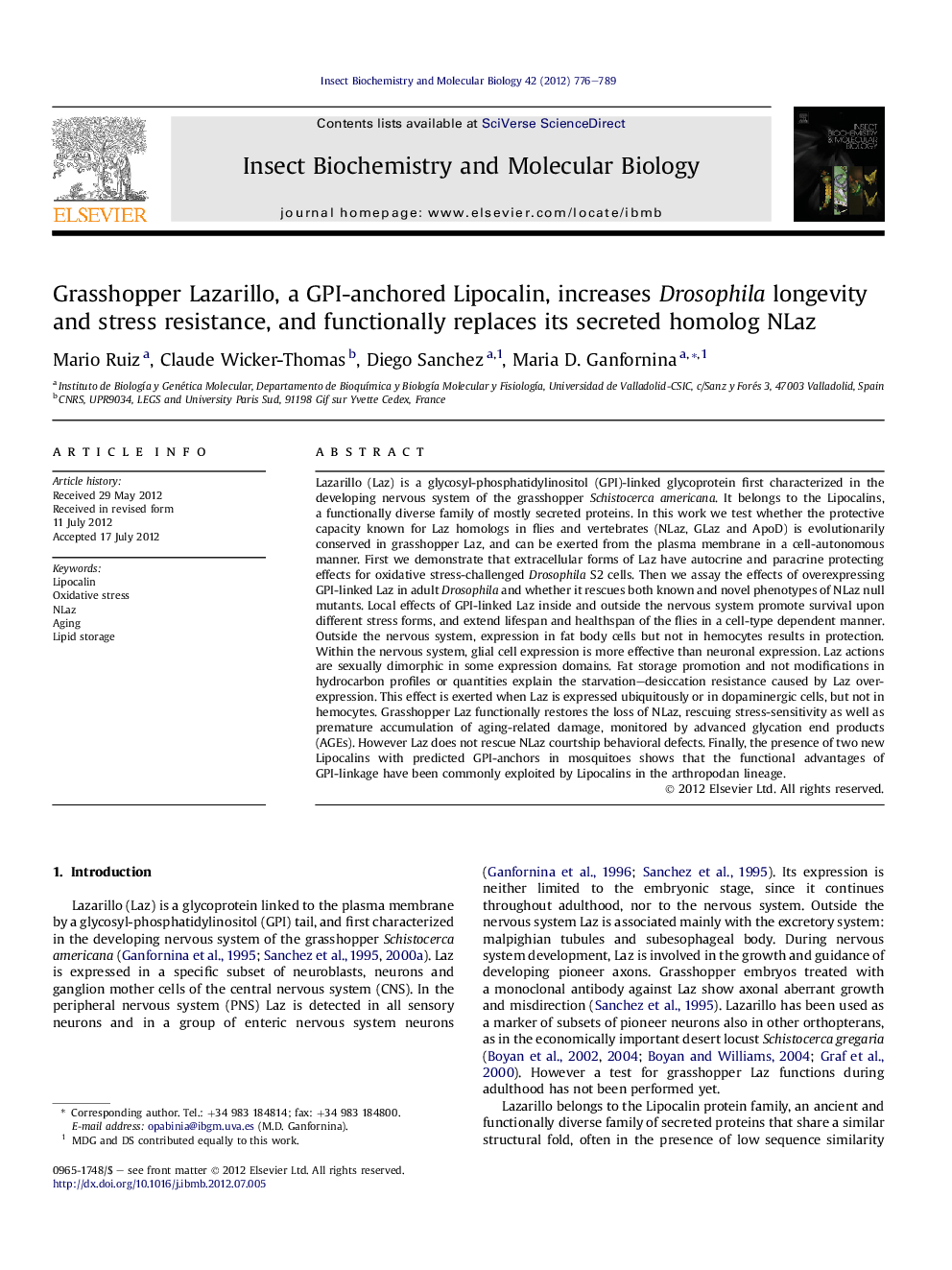| کد مقاله | کد نشریه | سال انتشار | مقاله انگلیسی | نسخه تمام متن |
|---|---|---|---|---|
| 1982271 | 1062273 | 2012 | 14 صفحه PDF | دانلود رایگان |

Lazarillo (Laz) is a glycosyl-phosphatidylinositol (GPI)-linked glycoprotein first characterized in the developing nervous system of the grasshopper Schistocerca americana. It belongs to the Lipocalins, a functionally diverse family of mostly secreted proteins. In this work we test whether the protective capacity known for Laz homologs in flies and vertebrates (NLaz, GLaz and ApoD) is evolutionarily conserved in grasshopper Laz, and can be exerted from the plasma membrane in a cell-autonomous manner. First we demonstrate that extracellular forms of Laz have autocrine and paracrine protecting effects for oxidative stress-challenged Drosophila S2 cells. Then we assay the effects of overexpressing GPI-linked Laz in adult Drosophila and whether it rescues both known and novel phenotypes of NLaz null mutants. Local effects of GPI-linked Laz inside and outside the nervous system promote survival upon different stress forms, and extend lifespan and healthspan of the flies in a cell-type dependent manner. Outside the nervous system, expression in fat body cells but not in hemocytes results in protection. Within the nervous system, glial cell expression is more effective than neuronal expression. Laz actions are sexually dimorphic in some expression domains. Fat storage promotion and not modifications in hydrocarbon profiles or quantities explain the starvation–desiccation resistance caused by Laz overexpression. This effect is exerted when Laz is expressed ubiquitously or in dopaminergic cells, but not in hemocytes. Grasshopper Laz functionally restores the loss of NLaz, rescuing stress-sensitivity as well as premature accumulation of aging-related damage, monitored by advanced glycation end products (AGEs). However Laz does not rescue NLaz courtship behavioral defects. Finally, the presence of two new Lipocalins with predicted GPI-anchors in mosquitoes shows that the functional advantages of GPI-linkage have been commonly exploited by Lipocalins in the arthropodan lineage.
Figure optionsDownload high-quality image (191 K)Download as PowerPoint slideHighlights
► An extracellular form of the GPI-linked grasshopper Lazarillo protects Drosophila cells from oxidative stress.
► GPI-linked Laz promotes stress resistance and extends lifespan in a cell-type dependent manner in Drosophila.
► Fat storage promotion and not changes in hydrocarbons explain the starvation–desiccation resistance of Laz expressing flies.
► Grasshopper Laz rescues stress-sensitivity and premature AGEs accumulation but not courtship defects in NLaz-/- flies.
► Laz GPI-linkage is shared by other arthropodan Lipocalins. Ancestral and specialized functions are distinguished.
Journal: Insect Biochemistry and Molecular Biology - Volume 42, Issue 10, October 2012, Pages 776–789